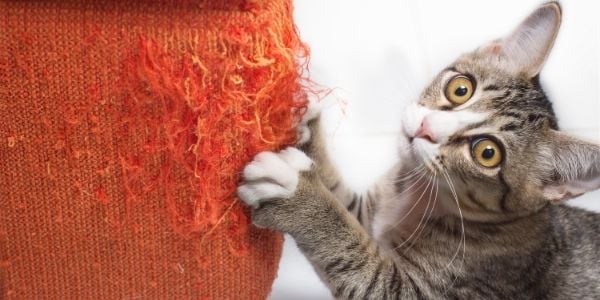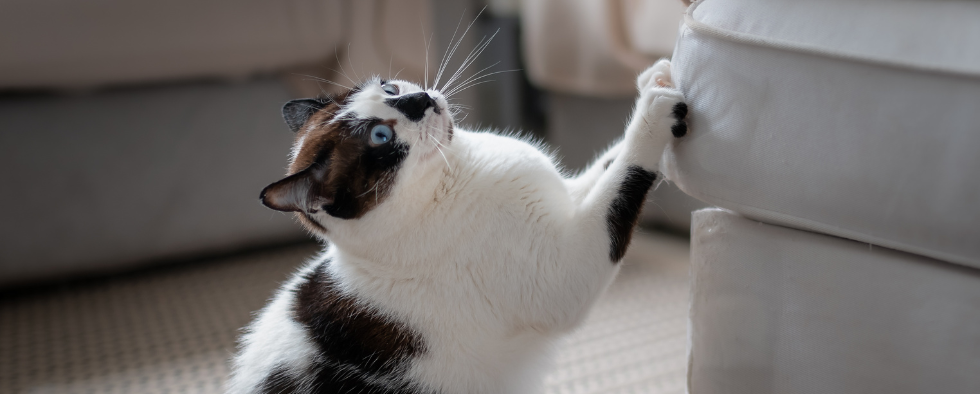If you own a Persian cat, you’re probably familiar with their scratching behavior. It’s a natural instinct for cats, but it can also be quite frustrating for pet owners. That’s why it’s important to redirect their instincts and provide them with appropriate outlets for scratching. In this article, we’ll explore different ways to help your Persian cat satisfy their scratching needs while keeping your furniture and belongings intact. Whether it’s providing scratching posts, using deterrents, or engaging them in play, we’ll cover all the bases to ensure a harmonious coexistence between you and your fur baby. So let’s dive in and discover the secrets of managing scratching behavior in Persian cats!

1. Scratching Behavior in Persian Cats and Why They Do It
1.1 Understanding the Natural Instinct
Persian cats, like many other feline species, have an innate instinct to scratch. This behavior is deeply rooted in their DNA and serves several purposes. Scratching helps keep their claws in optimal condition by removing the dead outer layer, allowing new growth and maintaining sharpness. It also helps stretch their bodies and flex their muscles, promoting overall physical health.
1.2 Benefits of Scratching for Persian Cats
Aside from physical benefits, scratching serves as an important form of communication for Persian cats. When they scratch, they leave behind visual and scent markings, thanks to scent glands in their paws. These markings convey information to other cats, signaling territory boundaries and providing a sense of security. Scratching can also be a stress-reliever and a way for cats to release pent-up energy or frustration.
1.3 Common Misconceptions about Scratching
There are few common misconceptions about scratching that need to be addressed. Some people may assume that scratching is an act of destruction or a sign of disobedience. However, scratching is a natural behavior for cats and should not be viewed as malicious. It is essential to redirect this behavior rather than punish or discourage it completely. Additionally, declawing, a practice that involves removing a cat’s claws surgically, is not recommended and can lead to long-term physical and psychological issues.
2. The Importance of Redirecting Scratching Behavior
2.1 Protecting Furniture and Possessions
One of the main reasons for redirecting scratching behavior in Persian cats is to protect furniture and other valuable possessions. Persian cats’ strong and sharp claws can easily damage upholstery, carpets, and wooden surfaces. By providing appropriate scratching alternatives, you can preserve your belongings while allowing your cat to fulfill its natural instincts.
2.2 Creating a Safe Environment for Your Persian Cat
Redirecting scratching behavior also contributes to creating a safe environment for your Persian cat. By offering suitable scratching surfaces, you can prevent accidents and injuries. Cats often stretch and reach high when scratching, which can lead to falls or collapses if there are no sturdy and stable surfaces available. Providing designated scratching areas keeps your cat safe and reduces the risk of injuries.
2.3 Preventing Injury to Your Cat
Furthermore, redirecting scratching behavior helps prevent injuries to your Persian cat. Scratching on inappropriate surfaces, such as sharp edges or rough textures, can cause cuts, scratches, or other wounds on their delicate paws. By offering suitable scratching options with smooth surfaces, you minimize the risk of injury and promote your cat’s overall well-being.
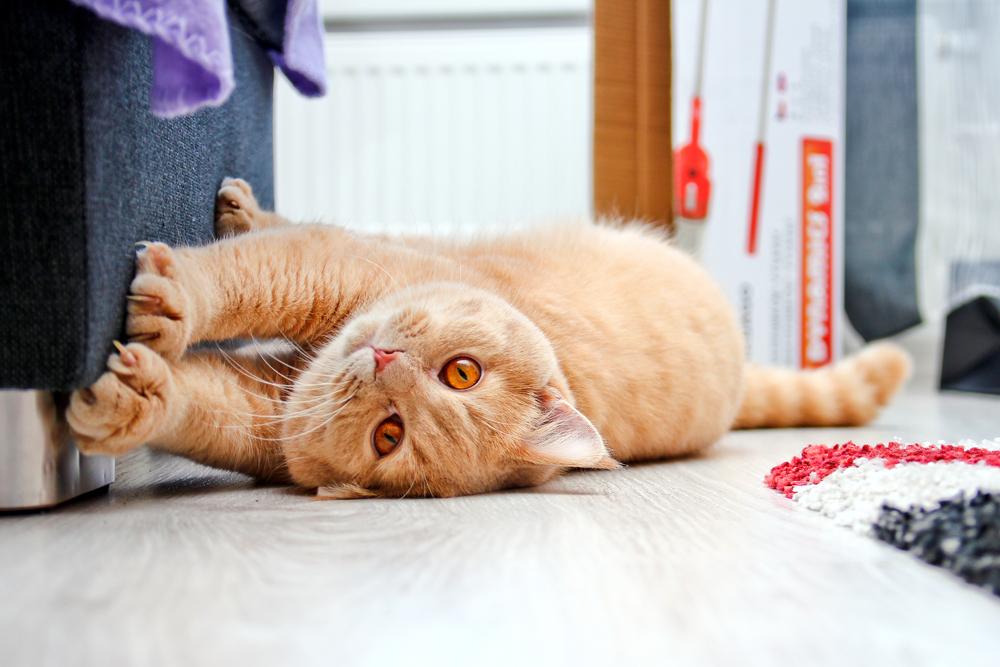
3. Providing Suitable Scratching Surfaces for Persian Cats
3.1 Choosing the Right Type of Scratching Post
When it comes to providing suitable scratching surfaces for Persian cats, choosing the right type of scratching post is crucial. Look for posts that are tall enough to allow your cat to fully stretch its body during scratching. Sturdy construction is essential to prevent wobbling or tipping over, ensuring your cat feels secure while scratching. Consider posts made of sisal rope or corrugated cardboard, as they provide the desired texture and durability that cats often prefer.
3.2 Placement and Accessibility of Scratching Surfaces
In addition to the type of scratching post, careful placement is important for encouraging its usage. Position the scratching posts in areas frequented by your Persian cat, such as near their sleeping area or where they often play. Make sure the posts are easily accessible and not obstructed by furniture or other obstacles. Placing them strategically increases the likelihood that your cat will choose the appropriate scratching surfaces.
3.3 Alternatives to Traditional Scratching Posts
While traditional scratching posts are typically the preferred choice, it is worth exploring other alternatives to cater to your Persian cat’s preferences. Some cats may prefer horizontal scratching surfaces, such as sturdy cardboard scratchers placed on the floor. Others may enjoy scratching pads or mats that can be attached to walls or door frames. By offering a variety of scratching options, you can find the ones that best suit your cat’s individual preferences.
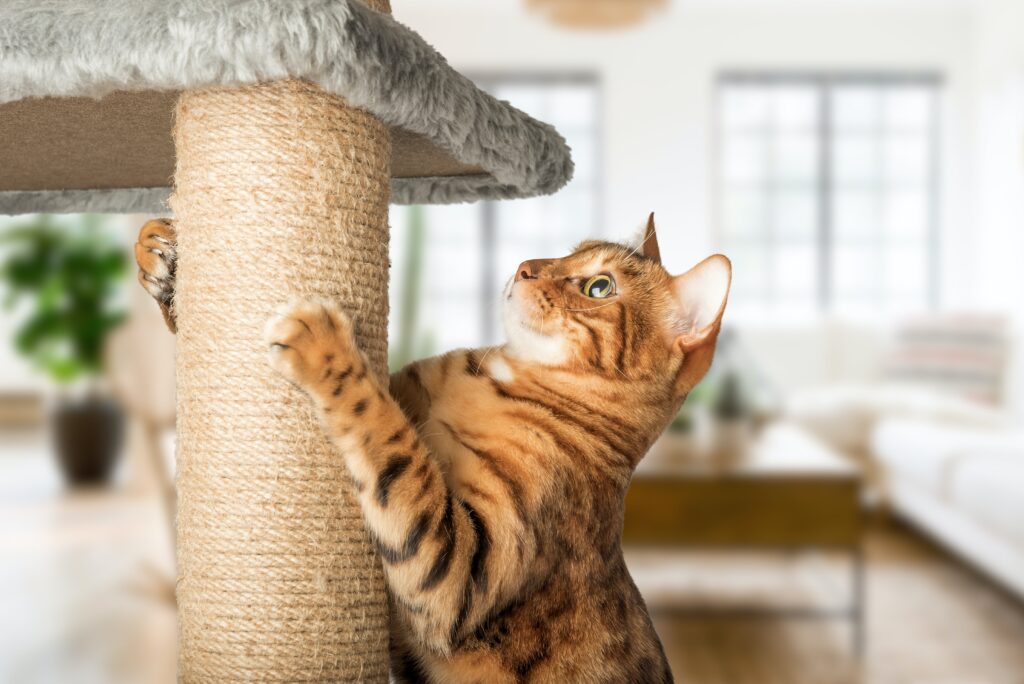
4. Training Persian Cats to Use Scratching Posts
4.1 Positive Reinforcement Techniques
Training Persian cats to use scratching posts can be achieved through positive reinforcement techniques. Whenever your cat uses the designated scratching surfaces, reward them with praise, treats, or toys. Positive reinforcement creates a positive association with scratching posts, making them more inclined to use them in the future. Avoid punishing or scolding your cat for inappropriate scratching, as this can create fear or anxiety rather than encourage desired behavior.
4.2 Introducing and Encouraging Usage of Scratching Posts
To introduce and encourage the usage of scratching posts, start by placing them in accessible and attractive locations. Apply catnip or synthetic pheromones to the surface to make it more appealing and enticing for your cat. You can also encourage your cat to approach the scratching post by using interactive toys or laser pointers. Gradually guide their paws towards the surface, praising and rewarding them when they show interest or engage with it.
4.3 Dealing with Reluctant Cats
If your Persian cat is initially reluctant to use the scratching post, be patient and persistent. Try rubbing some of your cat’s favorite treats or a small amount of wet food on the surface, gradually moving it closer to the scratching post. This can help create positive associations and motivate your cat to explore and eventually use the post. If they continue to show reluctance, consider consulting with a veterinarian or animal behaviorist for further guidance and support.
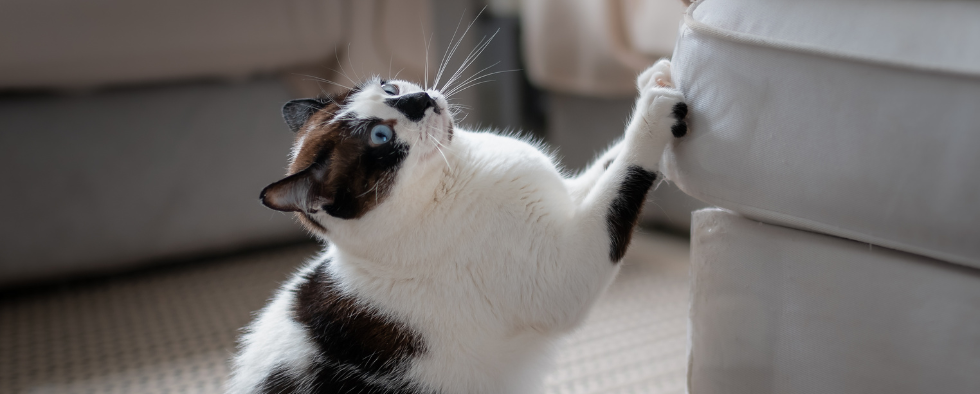
5. Deterrents and Strategies to Discourage Inappropriate Scratching
5.1 Understanding the Triggers for Inappropriate Scratching
To effectively discourage inappropriate scratching, it is crucial to understand the triggers that lead to it. Cats may scratch inappropriately due to stress, boredom, a lack of suitable alternatives, or territorial conflicts. By identifying the underlying reasons, you can implement appropriate deterrents and strategies to redirect their behavior.
5.2 Using Distractions and Redirecting Techniques
One effective strategy is to provide distractions and redirect your cat’s attention when they attempt to scratch inappropriately. Keep interactive toys or puzzle feeders near areas where your cat tends to scratch furniture or carpets. Engage them in play sessions or provide treats to redirect their focus. Additionally, promptly redirecting their attention to appropriate scratching surfaces whenever they begin inappropriate scratching can help reinforce desired behavior over time.
5.3 Safe and Humane Deterrents
Using safe and humane deterrents can also be effective in discouraging inappropriate scratching. Double-sided tape or sticky surfaces can be applied temporarily to furniture edges or other areas at risk to make them less appealing for scratching. Some cats are deterred by scents such as citrus or menthol, so using natural sprays with these scents on undesirable surfaces can help discourage scratching. Always ensure that any deterrents used are safe for cats and do not cause harm or distress.
(Continued in next response)
